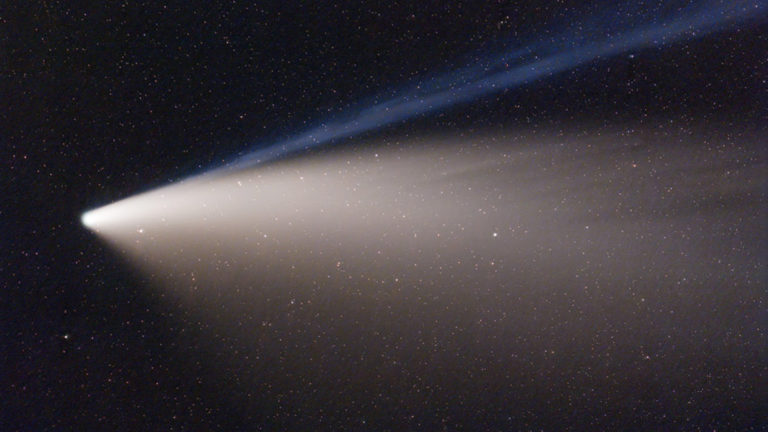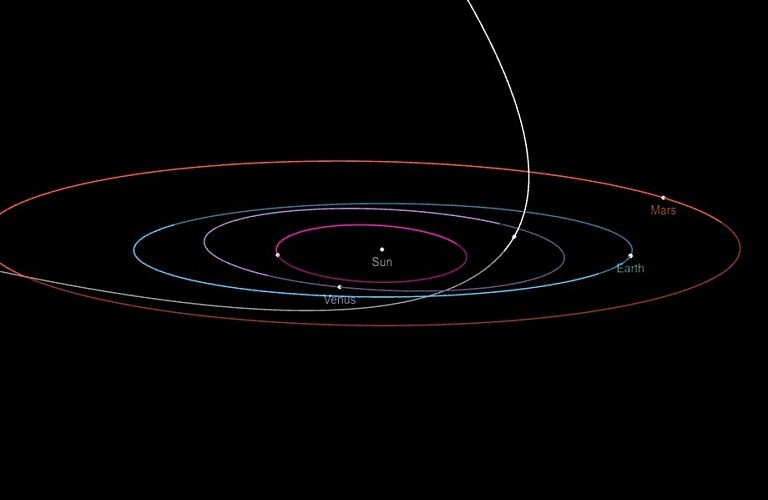Asa Stahl • Sep 26, 2024
How to spot Comet Tsuchinshan-Atlas

Officially known as C/2023 A3, Comet Tsuchinshan-Atlas gets its longer name from the facilities that first spotted it back in 2023: the Purple Mountain Observatory of the Chinese Academy of Sciences (or Tsuchinshan Chinese Observatory) and the Asteroid Terrestrial-impact Last Alert System (ATLAS). Since its initial discovery, amateur astronomers and scientists around the world have made thousands more observations of this comet. Many tracked Tsuchinshan-Atlas in hopes that it would become extremely bright — so bright that it outshines the stars, Jupiter, and even Venus.
Comet Tsuchinshan-Atlas ended up getting about one billion times brighter over the past couple years as it traveled closer to the Sun. Yet it was also notoriously hard to predict exactly what this comet would look like in advance.

Optimists described Comet Tsuchinshan-Atlas as “the comet of the century.” They said it would outshine everything but the Moon in the night sky and that it would stretch its tail over a huge portion of the sky. In that case, people around the world would be able to see the comet without trying at all. On the other hand, some people, like astronomer Dr. Zdeněk Sekanina, predicted that the comet will break apart around the closest point in its orbit to the Sun, or “perihelion.” Comet Tsuchinshan-Atlas showed no clear signs of fragmenting as it neared the Sun, and has now successfully survived to pass near our planet.
You can track how bright Tsuchinshan-Atlas is by checking the IAU Minor Planet Center or the Comet OBServation database (COBS). Keep in mind that the comet may seem brighter on paper than it really looks in the sky because, unlike a star, a comet’s light can be spread over a broad area of the sky.
When to see Comet Tsuchinshan-Atlas
The next few days are the best time remaining to see Comet Tsuchinshan-Atlas.

The comet should be visible after sunset near the horizon in the west. With every passing day, Tsuchinshan-Atlas will start the evening higher in the sky and be easier to spot, unless it gets too dim. The waxing Moon, which is set to become a full Moon the night of October 17th, will also make observing the comet more difficult.
Where can I watch Comet Tsuchinshan-Atlas?
Comet Tsuchinshan-Atlas is currently visible from both the Northern and Southern Hemispheres at night, though it’s a bit easier to spot the farther north you are. Someone in Australia or South Africa, for example, might expect to have a harder time finding Comet Tsuchinshan-Atlas than someone in India or Central America.
You may need binoculars to see Comet Tsuchinshan-Atlas, and a telescope with a wide field of view might be even better. Be sure to go somewhere with a good view out to the horizon, since the comet will not appear very high up in the sky until it's already somewhat dimmer. And if you live somewhere with intense light pollution, like the heart of a major city, you will have better odds of spotting the comet if you travel to a darker location farther from lights.

How to see Comet Tsuchinshan-Atlas
Look to the constellation Serpens above the western horizon shortly after sunset. Use binoculars or a telescope to spot the comet — right now, Tsuchinshan-Atlas is dim enough that it could be a challenge to see with the naked eye, depending on your eyesight and where you live. No matter what, stargazing from a darker location will give you the best views.
Try to go somewhere with a good view out to the horizon, since the comet will not appear very high up in the sky until it's dimmer. Let your eyes adjust to the dark for several minutes. If you’re using both eyes, look slightly above the comet instead of keeping it in the center of your vision. This “averted vision” technique will help you make out details better in the dark.

What is a comet?
Comets are small, irregularly shaped worlds of rock and ice that survived the formation of the Solar System — or that were born out of collisions between other Solar System bodies — and that now orbit the Sun. Comets are similar to asteroids, but more icy because they formed farther from the Sun and continue to spend most of their time there. When they do come closer to the Sun, comets warm up and throw off gas and dust, giving them tails.
It’s possible that Comet Tsuchinshan-Atlas came from the Oort Cloud, a huge collection of icy bodies that orbit the Sun far beyond any of the planets. Tsuchinshan-Atlas may return to the far outer Solar System on a long orbit spanning tens of thousands of years — or, it may pass by the Sun only once before being thrown out of the Solar System entirely. As it stands, scientists aren’t completely sure.


 Explore Worlds
Explore Worlds Find Life
Find Life Defend Earth
Defend Earth

